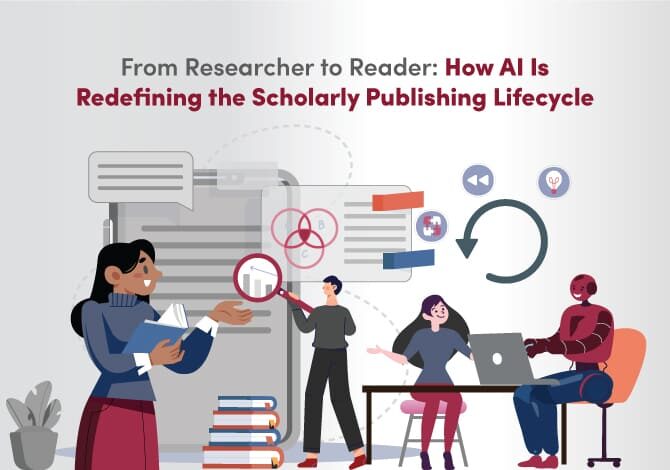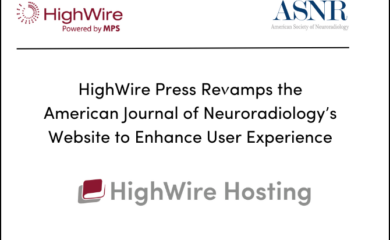As the global research ecosystem evolves, one truth has become clear: the next leap in scholarly publishing will be driven not by automation alone, but by intelligent integration. Across MPS and its SaaS division, HighWire, artificial intelligence is being woven into every stage of the research-to-reader journey, not as a replacement for people, but as an ally that improves efficiency, accelerates publication, safeguards integrity, and strengthens human expertise.
At the center of this transformation is MPS Labs, our AI/ML and NLP research center. Its mission is practical innovation, developing intelligent microservices that our staff use every day and that integrate seamlessly into MPS platforms such as DigiCorePro and HighWire Hosting. Many of these tools are already live across MPS workflows; others are in beta or proof-of-concept, moving rapidly toward release. Together, they are building the foundation for a new era of connected, data-driven publishing.
In this first installment we discuss how AI is helping to make the publishing process fast and efficient at MPS. The second installment will address research integrity issues and the people factor.
Efficiency: Streamlining the Publishing Workflow
AI is most powerful when it simplifies the complex. MPS Labs has developed a suite of tools that make everyday editorial and production work faster, more consistent, and less repetitive.
Automatic Language Assessment & Guided Editing (Live)
This system,powered by Natural Language Processing (NLP) and Natural Language Understanding (NLU), identifies grammar, phrasing, tone, and inclusivity issues within manuscripts. It integrates contextual understanding to ensure edits align with subject matter and editorial standards. By partnering with AJE’s Rubriq technology, it gives authors, especially those writing in a second language, precise feedback to improve clarity, while enabling editors to focus on higher-level quality checks. In internal production tests, the tool reduced copyediting turnaround time by up to 30%.
ML-Based Content Structuring and Tagging (Live)
Using deep-learning models, this tool automatically converts raw manuscripts into structured XML, ensuring metadata consistency and eliminating the need for manual reformatting. It is now a core component of MPS’s single-source production process and directly integrates with DigiCorePro’s ingestion workflow.
AI-Powered Chatbot (Live)
Embedded within our editing platform DigiEdit, this conversational AI assistant now handles 70-85% of incoming queries, cutting first-response time to 18 minutes and maintaining a 92% satisfaction rate. It provides real-time answers, links to documentation, and even short instructional video snippets, allowing our support staff to focus on complex issues while AI manages routine ones.
AI Indexing and Equation Description (In Testing / Proof of Concept)
New pilots extend AI into specialized production tasks. The indexing module automatically builds hierarchical book and journal indexes using tokenization, entity recognition, and contextual weighting. A related project, the “Actual Text for Equations” model, interprets MathML to produce human-readable descriptions, dramatically reducing the workload for subject-matter experts when ensuring mathematical accessibility.
These systems don’t eliminate human involvement, they amplify it. Editors, copyeditors, and support staff spend less time on repetitive work and more time applying expertise, judgment, and quality assurance.
Speed to Publication: Removing Bottlenecks
In publishing, speed isn’t about cutting corners, it’s about removing friction. Several of our newest AI services are designed to accelerate key steps from submission through peer review to publication.
ScholarFinder (Beta)
This reviewer-recommendation system analyzes manuscript content, keywords, and author metadata, expanding them with MeSH terms and automatically querying databases such as PubMed, Crossref, and OpenAlex to identify qualified reviewers. The tool also validates reviewer identities and ranks candidates based on expertise and potential conflicts of interest. What once took editors hours can now be done in minutes, while maintaining human oversight at every decision point.
AI Translation Pipeline (Live; R&D Expansion Underway)
Trained on multilingual T5 transformer models, this system supports six languages, Chinese, Spanish, Arabic, French, German, and Italian, and applies translation memory, glossary matching, and contextual QA. It preserves the integrity of scientific terminology and complex formatting. MPS subject experts still perform final validation, but the pipeline has already reduced multilingual turnaround time by over 40%. R&D work is now extending translation capability to text embedded in vector and raster images and to web content with embedded scripts, ensuring end-to-end localization.
Taxonomy Builder and Document Similarity Matcher (Live)
Both tools apply transformer models (BERT and SBERT) to enhance discoverability and editorial efficiency. The Taxonomy Builder automatically assigns relevant subject terms to manuscripts, while the Document Similarity Matcher pairs incoming submissions with the most suitable editors based on content alignment, past experience, and workload. Together, these services have enabled up to 25–30% workflow compression across pilot implementations. Taxonomy Builder is also integrated into DigiCorePro, identifying key words and concepts for a manuscript at the point of submission.
– By Tony Alves, Saai Murugan and Joshua Routh.



